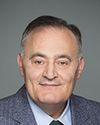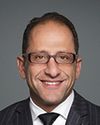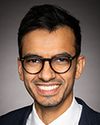That's wonderful. Thank you, Mr. Chair.
Members of the committee, distinguished guests, ladies and gentlemen, thank you for undertaking this study in disability-inclusive education. A special thank you goes to the Honourable Mike Lake for introducing this issue to the parliamentary agenda.
I am pleased to be here representing the World Bank, a multilateral institution that provides financing, policy advice and technical assistance to governments of developing countries.
My name is Ruchi Kulbir Singh, and I'm a disability inclusion specialist. I'm joined here today by my colleague, Charlotte McClain-Nhlapo, World Bank's global disability adviser, who joins us from a remote location in South Africa.
During my remarks, I will provide an overview of the World Bank's authorizing environment, and then share three key learnings from our experience in developing inclusive education and delivering it at scale through the World Bank's assisted-financing projects, along with recommendations.
The World Bank has been making considerable progress in promoting the rights of persons with disabilities throughout its operations. The World Bank's authorizing environment includes a commitment to ensure that all World Bank-financed education projects and programs are disability-inclusive by 2025. In addition, we have the IDA19 and IDA20 policy commitments, which make special reference to disability inclusion—and, in IDA20, to education more particularly.
The World Bank's authorizing framework is the social framework that presents entry points for inclusion. What that means is that every project, education, and otherwise must identify differentiated risks and impacts on persons with disabilities and design programs that prevent and mitigate such risks to ensure equal access and participation.
I am now going to share with you some distilled lessons from our work on improving and promoting disability-inclusive education.
First, there is a strong commitment among government partners to promote disability inclusion in education; however, the catalyst necessary to promote inclusion in education, which is strategic financing and budgetary support, often remains elusive. Regular financing is essential to operationalize a twin-track approach to ensure that a systems-level strengthening for inclusive education is possible. At the World Bank, we have implemented this approach of providing strategic catalytic grants through our two trust funds on disability-inclusive education in sub-Saharan Africa and South Asia, and we have seen big gains in countries such as Rwanda, Ethiopia and Nepal.
This operational playbook of investing in catalytic grants has also supported us to deliver at scale. For example, in Rwanda, an investment of $2 million U.S. by the World Bank's inclusive education initiative has successfully influenced several aspects of a $150-million investment project in areas such as teacher training, learning materials and infrastructural components, by applying the lens of disability inclusion. Hence, it is our recommendation that continuous financial resources must be available to provide just-in-time support to countries as they take small but critical steps towards ensuring inclusive education.
Secondly, children with intellectual disabilities are the most marginalized, overlooked and stigmatized amongst the disability groups. Moreover, within the disability groups, research indicates that issues concerning intellectual disabilities often receive little to no policy support or financial investment as compared to other disability groups. Resources in the form of financial and assistive technology are often channelled to organizations that may have the strongest lobby or advocacy on the ground.
Third, the commitment toward disability-inclusive education cannot afford to be political. Countries must support this agenda because the right to education is a human right and because article 24 of the Convention on the Rights of Persons with Disabilities prohibits discrimination on grounds of disability and promotes access—




